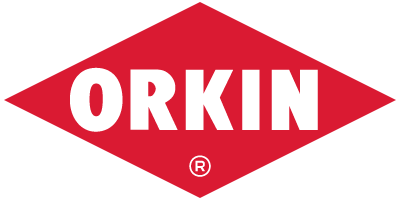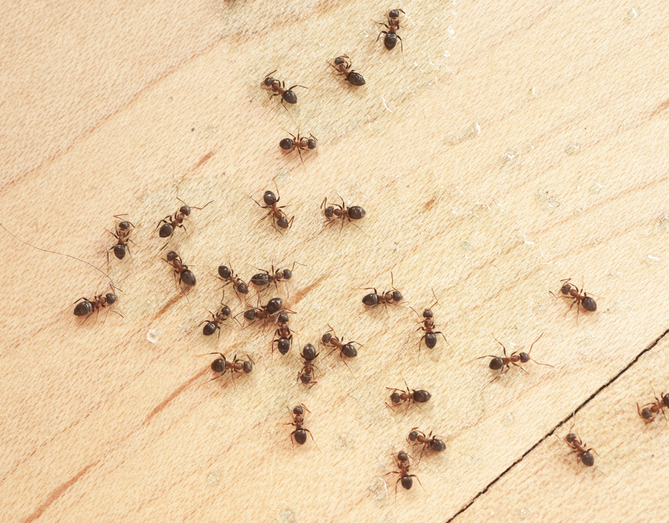Ants vs. Termites
Ants and termites are commonly mistaken for each other due to their small size, but they have distinct differences. Termites have straight antennae, a uniform body, and wings of equal size, while ants have elbowed antennae, a pinched waist, and uneven wings. Termites primarily feed on wood and cellulose, leading to structural damage in homes, whereas ants have varied diets and are often seen foraging. Correctly identifying these pests is crucial for effective treatment and prevention.
Ants vs. Termites: Know the Difference
Ants and termites are two of the most common pests that homeowners encounter. While they might seem similar at first glance, they have distinct differences and pose unique challenges. As experts in pest control, we at Orkin are here to educate you on these differences and offer solutions tailored to your needs. Here’s a detailed breakdown of their distinctions:
Physical Appearance
- Body Structure – Termites have a more straight and uniform body, with their thorax and abdomen being almost the same width. Ants, on the other hand, have a distinct narrow waist that separates their thorax from their abdomen.
- Antennae – Ants possess elbowed or bent antennae, giving them a jointed appearance. In contrast, termites have straight, bead-like antennae that don’t bend.
- Color – While both ants and termites can range in color, termites are often paler, ranging from white to light brown. Ants can be black, brown, red, or even a combination of these colors.
Wings
- Number and Size – Both ants and termites can have winged varieties, often called “swarmers.” However, termite swarmers have two pairs of wings that are of equal size and shape. Ant swarmers also have two pairs of wings, but their front wings are noticeably larger than the hind wings.
- Veins – The wings of termites have fewer veins and appear more translucent, while ant wings have a more detailed vein structure.
- Attachment – Termite wings are easily detachable, often leaving behind wing piles near windows or other light sources. Ant wings are more firmly attached.

Save $50
on your first recurring service today with code GET50

GET A PERSONALIZED QUOTE
To protect your home from pests, click here for a free pest control estimate. Our Orkin Pros will create a personalized pest treatment plan for your home or business
or Call (866) 249-0292
Behavior and Habits
- Diet – Termites are primarily detritivores, feeding on dead plants, wood, and cellulose. This diet is what leads them to cause structural damage to homes. Ants have a varied diet, including nectar, seeds, other insects, and even food debris from human habitats.
- Nesting – Termites prefer dark, moist environments and often build their colonies within wood or underground. Ants build their nests in a variety of locations, from underground to inside logs or even in the walls of buildings.
- Activity – Ants are often seen out in the open, especially when foraging for food. Termites, being more reclusive, are rarely seen outside of their colonies unless their nest is disturbed or during swarming seasons.
- Signs – Termites often leave behind mud tubes on walls, which they use to travel. Their damage is often hidden within walls or wooden structures. Ants, especially carpenter ants, can also damage wood, but they hollow it out to build their nests rather than consume it.
Life Cycle
- Reproduction – Both ants and termites have a queen responsible for reproduction. However, termite queens have a longer lifespan and can produce thousands of eggs in a day, while ant queens produce fewer eggs.
- Development – Termites undergo incomplete metamorphosis, transitioning from egg to nymph to adult. Ants undergo complete metamorphosis, going through egg, larva, pupa, and adult stages.
Understanding these differences is essential for homeowners. If you suspect an infestation, it’s crucial to correctly identify the pest to apply the most effective treatment. Always consider reaching out to professionals like Orkin for accurate identification and treatment solutions.
Why Orkin?
At Orkin, we understand the biology and behavior of both ants and termites. Our treatments are not just about eliminating the pests you see but addressing the root of the problem. We offer:
- Baiting programs – Our baiting programs are designed to be attractive to ants, ensuring that they carry the bait back to their colonies, eliminating them from the source.
- Barrier Treatments – We use contact insecticides, like Termidor®, to establish a barrier around your home, preventing ant invasions.
- Nest Treatments – If you discover a nest, we have the expertise to treat it directly, ensuring complete eradication.
Protecting Your Home
- Keep it Clean – Ensure that all food sources are stored in sealed containers and clean up any spills promptly.
- Seal Entry Points – Caulk cracks and crevices and replace worn weatherstripping around doors and windows.
- Regular Inspections – Regularly inspect your home for signs of ant or termite activity. Look for mud tubes, damaged wood, or visible pests.
Frequently Asked Questions
Why are ants in my home?
Ants enter homes in search of food, water, or a nesting site. Keeping your home clean and free of food spills can deter them.
How can I differentiate between winged ants and termites?
Winged ants have elbowed antennae and a narrow waist, while termites have straight antennae and a broad waist.
How long does it take for Orkin’s baiting program to work?
With the right bait and consistent application, ants should be controlled within 3 to 4 weeks.
Are all ants harmful?
No, most ant species are beneficial in the landscape. However, some, like fire ants, can be a nuisance and pose health risks.
How often should I get my home inspected for termites?
It’s recommended to have an annual inspection, especially if you live in an area prone to termite activity.
Can I handle ant and termite problems on my own?
While there are DIY methods available, professional treatment ensures that the root of the problem is addressed, providing long-term relief.
What makes Orkin’s treatments effective against ants and termites?
At Orkin, we use a combination of baits, contact insecticides, and direct nest treatments tailored to the specific pest and infestation level.
Are Orkin’s treatments safe for my family and pets?
Yes, our treatments are designed to be effective against pests while ensuring the safety of your family and pets.
Call Orkin for Expert Assistance
Don’t let ants and termites take over your home. With Orkin’s expertise and tailored solutions, you can rest easy knowing your home is protected. Call us today for a consultation and let us help you keep your home pest-free. Remember, when it comes to pests, trust Orkin to get the job done right.

FIND YOUR LOCAL BRANCH
To protect your home from pests, click here for a free pest control estimate. Our Orkin Pros will create a personalized pest treatment plan for your home or business
or Call (866) 249-0292

